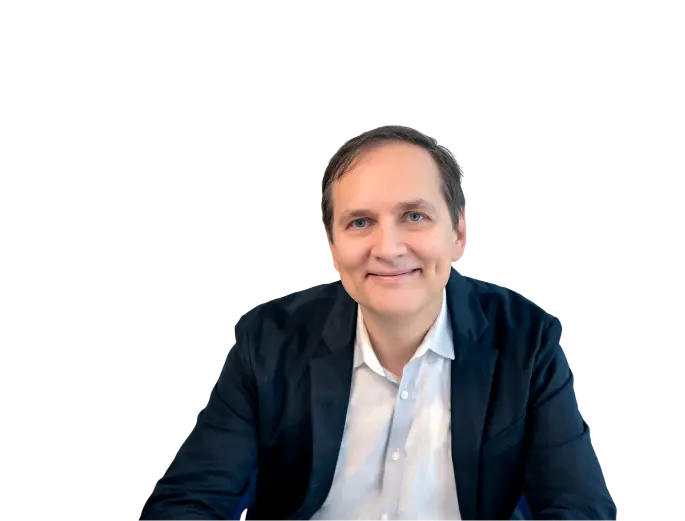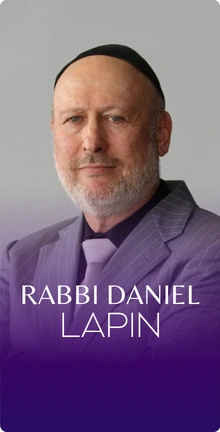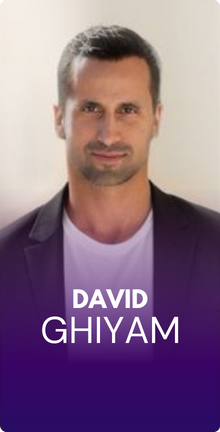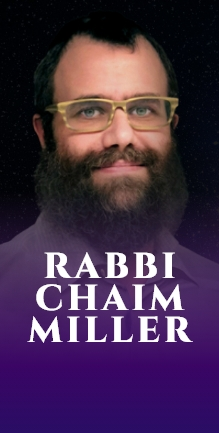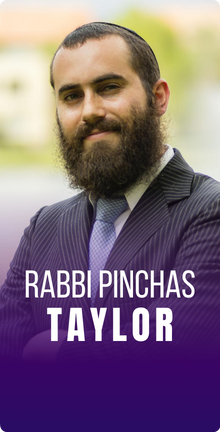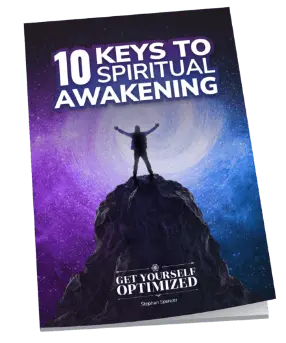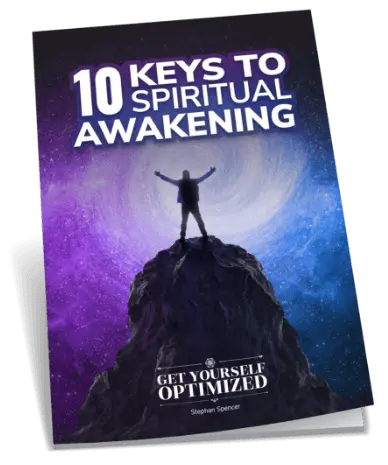In this Episode
- [02:18]Efraim Palvanov shares his origin story and journey in understanding and spreading God’s word with the world.
- [04:25]Efraim defines kabbalah and its two categories, while describing Torah and its four levels of interpretation.
- [12:25]Stephan and Efraim explore Torah’s numerical relationships and hidden codes.
- [20:43]Efraim connects ancient figures like Yaakov and Esav to historical relationships between Jewish and Christian civilizations.
- [26:42]Stephan and Efraim investigate the role of reincarnation in Jewish tradition.
- [29:46]Efraim delves into the connection between Edom and the Roman Empire.
- [33:29]Stephan and Efraim analyze the Roman Empire’s adoption of Christianity, which further solidified the connection between Edom and the Roman Empire.
- [40:33]Stephan and Efraim explore elements of the movie The Matrix that align with Jewish mysticism.
- [44:51]Efraim explains the concept of time in Jewish Mysticism.
- [49:17]Efraim unpacks the role of consciousness, including its various levels.
- [55:25]Efraim reveals the meaning of teshuva as a way to reconnect with our godly spark and find our true purpose.
Efraim, it’s so great to have you on the show.
Pleasure. Thank you for having me.
We talked before the recording here that I’m a fan. I’ve listened to a number of your classes. You have 3.9 million views on your YouTube channel. You’re quite a star on YouTube. I’d love for our listeners to first get a sense of who you are, what your origin story is, and how you got to be where you’re at now.
Sure. My origin story is that I was born in the USSR. I spent the first half of my youth in Israel and the second half in Canada. I grew up traditional, not religious—mostly secular, but traditional Sephardic. Most Sephardis are kind of traditional growing up.
When I was about 14 years old, I started learning; I got into Torah learning, and since then, I’ve been learning as much as I can about the spiritual world and about other religions. It took a number of years. I didn’t become religious until I was about 20 years old—actually on my 20th birthday—and that’s when I fully committed to this path. Meanwhile, I also pursued science, multiple degrees in science-related fields, starting with biomedical science. I worked as a medic for a couple of years and served in the Canadian Army as a medic.
I strive to share God’s word with the world, with anyone who is interested and wants to listen, and to make sense of our complex reality.
Eventually, I started writing books. The YouTube channel came out by accident. During COVID, since we couldn’t meet in person, I uploaded some recorded classes. I never thought anything would come of it, but within a year or two, it took off. Thank God. That’s what I do now—share God’s word with anyone interested, and help make sense of our very complex reality.
You touch on Kabbalistic concepts. Kabbalah is part of what you teach. I’d love to hear how you see it—what it is and maybe also what it isn’t.
Kabbalah has become a catchphrase for everything, and people often misuse the term. But Kabbalah literally just means “reception.” It comes from the Hebrew root for “receiving.” In ancient Jewish texts, such as the Talmud, it is stated that we have something through Kabbalah. It’s actually just saying we have it from the prophets, from the Nevi’im, that part of the Tanakh, that part of the Bible that deals with that, that records the sayings of the prophets. That’s actually what Kabbalah originally meant. It actually just means what we have, by tradition, from our ancient prophets, from the biblical prophets. Kabbalah literally means reception.
The metaphor that I like to use is of a receiver. A Kabbalist is a receiver. What is a receiver? Like the metaphor of a radio receiver. The room I’m sitting in right now, and the room you’re sitting in right now are probably quiet, and you don’t hear any music, but the truth is, they’re full of music.
Being a Kabbalist means being a receiver, tuning into frequencies and just tapping into godliness.
There’s music all around you, literal music, and you just can’t hear it because your ears are not able to pick up those radio frequencies. But if you have a radio receiver, you’ll hear the music. I think being a Kabbalist is the same. It literally means being a receiver. It’s like being a radio receiver and tuning into frequencies that are kind of invisible, but are definitely there, and just tapping into that kind of godliness. That’s basically what Kabbalah is, in a nutshell.
It’s Jewish mysticism. It’s understanding the cosmos. Historically, it was divided into two categories. One was called Ma’aseh Bereshit: the act of creation, the account of creation. This is about understanding the cosmos, its foundations, what the universe is built upon, and how God created the universe. That’s one half.
The other half is called Ma’aseh Merkavah, the divine chariot, the account of the chariot. That’s all about understanding, essentially, prophecy and our relationship with God, as well as our relationship to the universe at large. Ma’aseh Bereshit is based on Genesis. Ma’aseh Merkavah is based on the book of Ezekiel, which begins with Ezekiel’s vision of the divine chariot—a theme also found throughout the Bible and the Tanakh.
Isaiah saw the chariot. Daniel saw the chariot. Elijah saw the chariot, and all the Israelites at Mount Sinai saw the chariot, and so on. There’s this theme of the divine chariot. Those are, historically, the two aspects of Kabbalah. The last thing I’ll say on that is that we talk about studying God’s word, specifically the Tanakh and the Bible. We do it on four levels. The acronym for it is PaRDeS. PaRDeS means paradise. It’s the root of the English word paradise. Parades in Hebrew means “orchard,” similar to a fruit orchard, a field, or a garden.
A Kabbalist is like a receiver. Divine wisdom is constantly surrounding us—subtle, silent, ever-present. However, it is only when we become attuned, open, and receptive that we can truly perceive it. Share on XOur sages said, learning Torah, you have to plunge into, enter the orchard, enter the pardes. And PaRDeS is an acronym that stands for:
- P – Peshat: the simple understanding of the text.
- R – Remez: going a little bit deeper and getting what the text is trying to teach me.
- D – Derash: metaphorical, allegorical.
- S – Sod: secrets.
Kabbalah is essentially concerned with the secrets of Torah, the secrets of the Bible. That’s all that Kabbalah is.
When you say “secrets,” I mean there are literal secrets in the text, hidden in gematria, which are numerical associations with the letters that, when you add them up, or you do different kinds of calculations, you get relationships between different key terms and key themes.
In the Bible, there are secrets in the way the letters are written, with the little dots and crowns on the letters, and so forth. These are all meaningful, and hidden secret knowledge is embedded in those. I believe that part of the reason for that is so that when the text gets intercepted by the enemy, who wants to destroy Judaism in Roman times and so forth, they couldn’t use everything that was there against the Jews, because a lot of it was in code, essentially. Is that accurate?
The Torah is a living text, meant to be studied and even debated. That’s very important in Jewish tradition.
Yeah, I think that’s part of it. I think it’s partly because the Torah is meant to be something alive. It’s a living document. It’s not a reference textbook that you can keep on the shelf and that anybody can look up. That’s not the point of it. The Torah is a living text, and it’s meant to be studied and even argued over. That’s very important in Jewish tradition. That’s really what the Talmud is all about. It’s about trying to make sense, bring the text to life. We have this idea of an oral Torah, an oral tradition that goes alongside the Written Torah, that goes all the way back to Mount Sinai and to Moses. Moses wrote the physical Torah.
There was also, of course, oral teachings that went along with that, which is normal, like, that’s true. I’m a teacher, and when I’m in a classroom, we don’t just read the textbook and that’s it. I hardly ever even use the textbook. I don’t require my students to get the textbook, because it’s not really about the text, it’s about the actual learning, engaging in conversation and debate and experiencing the learning directly. It’s the same thing with the Torah. It’s not meant just to be a textbook that anybody can look up, and it’s meant to be alive, and it’s something that we have to debate, discuss, interpret, and reinterpret.
We also have oral traditions that have been passed down through generations, dating back to Sinai, even before Sinai, to Abraham, and even before that, to Adam. We have traditions of certain teachings going all the way back to Adam. There’s so much more beyond just the written text. The Torah is a code. The Torah is described as a song. We sing the Torah in the synagogues. We chant the Torah. We sing the Torah. It has actual musical notes. It’s a song of creation, and it’s also a code. There’s a rabbinic teaching that says, hafoch bah ve-hafoch bah, de-khola bah.
We live in a vast universe. The whole cosmos is very deeply mathematical.
You turn it over and turn it over, because everything is in it, and you can even find yourself in it. Every person can find where they are in the Torah if they know where to look and how to look, and yes, the Torah has this perfect mathematical precision. It’s actually incredible. Some people think gematria is like Jewish numerology. They think it’s all made up, and you can find anything and find any number pattern, or make up all kinds of numerical correspondences and coincidences. But that’s a big mistake, because we live in a universe at large. The whole cosmos is very deeply mathematical. That’s something that we have to understand.
The whole cosmos is built on math. Why is the universe mathematical? Why can we describe everything with a formula? Why is it that we can put a number on anything? We can predict wind patterns. We can predict the motions of distant galaxies and planets. Why is it? Why can I calculate the exact number of molecules of water in a cup of water, and I make my students do it all the time? It’s just basic, like grade 11 chemistry. You have a background in that as well. Why is the universe so perfectly mathematical in the philosophy of science? That’s a big question.
That doesn’t have to be this way. It didn’t have to be that the universe is so perfectly fine-tuned. We live in this fine-tuned mathematical universe where everything has some numerical equation. The Torah is the same. The Torah, again, is just like the blueprint for the cosmos. The Torah, just like the cosmos, is perfectly mathematical. They’re incredible numerical relationships. Traditionally, Hebrew had no numbers; the letters were numbers. The first letter, aleph, is one, and bet is two. To this day, we use letters as numbers. The whole Torah is really a numerical code with incredible numerical correspondences and formulas, both physical and spiritual.
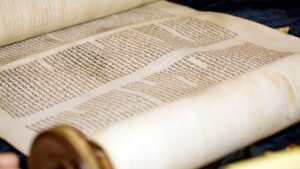
There’s one code that keeps repeating, apparently, in the first book in Genesis and Bereshit, or does it spill over into the next several books? I forget. But every certain number of characters, this repeating sequence is like a watermark, essentially.
Yeah. There is a whole separate thing from gematria. Actually, gematria is where the letters have a numerical value. There’s a separate thing called dilug. Dilug literally means skipping, and some people call it ELS (equidistant letter skips). That’s where you will look, and you will pick out words that come out of skipping a certain number of letters, like every three letters, you get a certain word that will emerge, or every four letters, every five letters. Today, they use computers to do things like these very complex ELS codes. That’s not really part of ancient Jewish tradition, because it’s impossible to do without a computer.
But in ancient Jewish tradition, what we do have is dilug, which is skipping every certain number of letters. You’ll find that if you count, for example, in Genesis, from the first letter, if you count every 50 letters, you will get the word Torah. In the second book of the Torah, as well, in Exodus, if you count every 50 letters again, it spells out Torah. So you have patterns like that. From the last two books, if you count from the end, you count 50 letters from the last letter, it spells Torah. The fourth book in the Old Testament, the book of Numbers, you count from the last word 50 letters, and you get Torah. There are very interesting things, such as ELS, which involves equidistant letters.
It’s amazing. That’s mind-blowing.
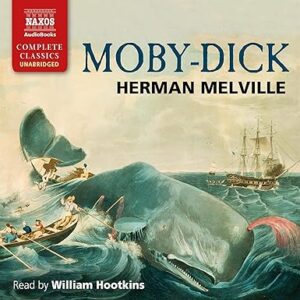
Separate from gematria. I’m a big fan of gematria, which involves actually examining the numerical values in the Torah. Some people like to use the ELS method, which involves looking at skips. There are many people who criticize it. I’ve been critical of it myself sometimes, because if you have a very big text and you have a very long skip, then indeed you might be able to find all kinds of things.
The traditional way of doing it is not to use massive skips. It’s like just doing it very briefly. What’s humanly possible? If it requires a computer, then that already starts to get complicated. People do end up finding all kinds of things. Not just in the Torah, but even in a book like Moby-Dick or whatever, anything that’s very long, you can find. If your book is long enough, if the text is long enough, and the skip is long enough, then you might find all kinds of things that aren’t really true.
To keep it now, certain prayers in Judaism, written in Hebrew, have the first letter of each line spell out the author’s name, right?
Yes, so that you will find, as well, which is like an acrostic. That’s very popular, for sure, in Judaism, many of the songs, many of the piyyutim, various prayer poems and prayers do have an acrostic where each verse begins. It’s in the Bible itself, in the book of Psalms. There are many psalms that go by an order of the Hebrew alphabet, right? Like each verse, the first one starts with an alef, the second with a bet, and the gimel and dalet follow in alphabetical order. Each verse begins with a letter in the order of the Hebrew alphabet.
Now, that makes it very, very important for the text to be kept exact. In the Written Torah, you cannot paraphrase. You cannot make any mistakes. If there’s one little, tiny error in a mezuzah scroll, that scroll is not usable. You cannot hang it on the doorpost. If you compare the versions of different books, like the book of Isaiah, you’ll see no changes. One thousand years go by, and there have been no changes to it. It’s been kept with absolute precision. I remember seeing a clip about this. Wes Huff was on Joe Rogan’s podcast talking about the integrity of the Isaiah scroll, that they hadn’t found anything earlier in the book of Isaiah, since the Middle Ages, I don’t know. Basically, when they found the Dead Sea Scrolls, they were able to go back an extra 1000 years and find that the book was kept with integrity and precision. That’s amazing.
This life is only a hallway; the banquet hall lies beyond. It’s transient and fleeting, a mere blink of an eye. Share on XThe differences are minimal, and the time is basically insignificant. And especially with the Torah itself, with the Five Books of Moses, which Jewish sages and scribes throughout history were particularly careful to transmit, the actual five books, that’s what’s most holy, the Torah of Moses. So those five for sure maintain incredible integrity.
Also, the Oral Torah, which I understand, was also given to Moses on Mount Sinai, not just the Written Torah, but the Oral Torah. Then the Jews had to retain that, memorize that, again with precision for many, many hundreds of years, until finally, at the risk of extinction. It was written down, and then it was maintained with the same level of precision that you can’t make mistakes, you can’t paraphrase, you can’t lose any of the integrity of things like the gematria and the other secrets that are embedded in these texts.
Yeah, absolutely. There are so many secrets embedded, again, even in the Mishnah, which is the first actual formulation of the oral laws that were written down in the second century of the Common Era, because of, again, the threat of Roman obliteration of Judaism at the time. Judah ha-Nasi took it upon themselves among his companions to record the oral laws, and so that was the Mishnah, and then after that, the Talmud, which really is a record of debates over the Mishnah and how to properly understand them.
Sometimes, people say the Talmud is the first hyperlinked text because it contains cross-references to everything.
But in both, you have embedded many incredible secrets, and it’s much deeper than what the surface text actually says, and it was done that way deliberately. It’s like a puzzle that you have to piece together, and that’s part of the fun of learning it. It’s actually a very engaging experience of learning, breaking apart the text, and trying to make sense of this puzzle. Sometimes, people will say that the Talmud is like the first hyperlinked text, because it’s a cross-reference to everything.
It cross-references scripture. It cross-references Mishnahs and other sources, and Midrash, which is a whole other area. Midrash is all of these non-legal narratives that were passed down by oral tradition and that fill in a lot of the missing details from scripture. The Talmud, like hyperlinks, combines and integrates all of these. It’s an incredible experience to actually learn and understand it, and to be able to integrate all of these assets, part of the fun of it, of creating this web in your mind, and it all starts to crystallize and make sense. God’s word really starts to make sense.
It’s not just the rules, the decrees, the mitzvot, the mitzvas, that have to be kept by the Jews. It is so rich with allegory and with meaning, and when you use some of these decoding devices, such as the gematria, I love the example that you shared in one of your classes about why Yaakov (Jacob), did not kill his brother, Esau, because he needed to make peace with him.
The reason you are able to tease that out is that he needed to make peace and not just kill him, because he certainly had the right to, he was being pursued. His life was in danger. Esau was going to kill him if he could. But you decoded that, you unpacked that in the class, explaining it through gematria, how this rectification of Esau, by bringing peace between them, would help, kind of rectify the world, Tikkun olam. So could you elaborate a bit more on that? Because I probably butchered that pretty badly.

I think that the key elements are there. It’s important to clarify that I don’t think Yaakov (Jacob), ever intended to kill Esau. Okay, we don’t have any indication that Jacob had a desire to kill him. The other way, right? The Torah says that Esau wanted to kill Jacob because he was so mad at him for taking his birthright and his blessing, and Esau pursued Jacob. When Jacob never wanted to kill Esau. One of the great rabbis, the Ba’al HaTurim, points out that the numerical value of the word Esau (Esav), of the name Ayin Shin Vav, is 376, which is the same value as Shalom of peace. Peace is also 376, so the Ba’al HaTurim points out that ultimately, there will be peace between Jacob and Esau.
Rather, these brothers will reunite and be able to dwell together and live together as God intended, because they’re originally, if you remember the story, their mother, Rebecca, was pregnant, and the Torah says that there was a battle in her womb. Esav was born very ready, and he was born very hairy and muscular, like a little man. That’s what Esav means, that he was like, born complete. The other, Yaakov, was smooth and smaller and looked like he was called Yaakov from the word heel, because he was grasping onto the heel of his brother. Yaakov is described as this very innocent, meek child, and Esav is like this really strong, red man.
They were supposed to work together to rectify the world and do God’s work. Asav had the blessing to do it in a physical way. He was given physical powers, and Yaakov was given the spiritual powers. Yaakov would be like the educator, the teacher, the Rabbi, and Esau could be the warrior, because you have to bring light into the world, but you also have to confront darkness. You also have to build; you also have to do physical things, and unfortunately, asav couldn’t really contain those physical blessings, and he fell into sin.
In the end of days, eventually, Yaakov and Esau will reunite, make peace, and finally fulfill their mission of working together to make the world a better place.
Yaakov tried to take on that birthright, that mission of Esav unto himself. Esau later regretted abandoning his birthright and his mission. The idea is that in the end of days, eventually, Yaakov and Esau will reunite, will make peace, and will finally fulfill their mission of working together to make the world a better place, to rectify the whole world, to transform the world into a godly kingdom, as God intended.
Will that be where they are reincarnated and have material bodies, or will that be in the spiritual and the non-physical? Like, how will that occur?
I think we see it as Yaakov representing the entire Jewish people, and Esau representing, also called Edom, representing, in Jewish tradition, the whole kind of Western world, the Christian world, the European world, and generally, we see the Yaakov-Esav relationship, symbolizing the Jewish Christian relationship, where we’re like brothers, really, and we come from a common source. Christianity is built on Jesus, who was a Jew, yet, over history, we’ve separated so far. Well, the idea is that one day, we’ll come back and make peace again.
This idea of Esau pursuing Jacob all the time and wanting to kill Jacob for the Jews always seemed like that’s why Christians have, for most of history, oppressed Jews. There’s been a lot of Christian persecution of Jews throughout history, whether it’s the crusades, the inquisitions, or the pogroms, even, of course, culminating in the holocaust. In Jewish tradition, we see that, starting from the Roman Empire and continuing to the last century, a very difficult Jewish-Christian relationship is like that of Jacob and Esau, and at the same time, also having good relations.
Jewish-Christian history has not always been terrible. It’s like a roller coaster. There are good times, bad times, and times when we get along and help and support each other.
Jewish-Christian history has not always been terrible. It’s kind of like a roller coaster. There are good times, there are bad times, and there are times when we really get along and help and support each other. You see that today, a lot of the big supporters of Israel are Christians, evangelical Christians, and other Christians who are big supporters. Throughout history, not just today. In European history, there were times when Jews were a protected people, when European kings were good kings, and then tried to protect Jews and vice versa.
Then there were the bad kings who expelled the Jews and persecuted them Jews. This is kind of a love-hate relationship. We see that in Jacob and Esau first. In Jewish tradition, the relationship between Jacob and Esau has long been viewed as a model or metaphor for the Jewish-Christian relationship throughout history. I think the fact that it’s getting better now that, in recent decades, we’ve gone so much closer, including the Catholic Church moving away from its previous beliefs.
John Paul II, the Second Vatican Council. They moved away from a lot of the kind of anti-Semitism that was embedded in Catholic beliefs. I think that’s also part of the reconciliation at the end of days between Jacob and Esau. Similarly, the Christian Zionist Movement and evangelical Christians share this perspective. I think it’s all part of this prophesied statement that Yaakov will make peace at the end of days, and we’ll work together to recreate a better world, to create a godly world.
We’re seeing it now because kind of like when we look at morally, spiritually, where the world is lining up, it’s like the Judeo-Christian values versus various other ideologies, and we find that certainly Orthodox-Jews in particular have a lot in common with our Christian brothers, because we ultimately are Jacob and Esau. We’re originally brothers, and we need to reconcile, and only if we work together. If we can put aside some of our differences and work together, we can make the perfect world, the godly world that we want.

I love that. One of my favorite examples of the Yaakov and Esau relationship is Emperor Marcus Aurelius. One of his best friends was Rabbi Yehuda ha-Nasi, Judah, a prince, a Rabbi with incredible wisdom and righteousness, and they were just really great friends. Marcus relied on him for a lot of advice on how to run the Roman Empire.
I remember one story. He sent one of his soldiers or servants to the rabbi for advice about the Roman coffers were empty, and the rabbi’s coded message was not to actually say anything, but in front of the messenger, he went to the garden and pulled out some of the plants and put other plants in its place. Marcus was wise enough to understand what that meant.
When the messenger came back and explained what happened, he didn’t actually give an answer. All he did was do this weird thing in the garden, and he knew to replace some of his trusted advisors. And sure enough, the coffers started filling up. So some of his most trusted inner circle were stealing from the Roman Empire?
Yeah, absolutely. We know that Marcus Aurelius was one of the great Roman philosopher-kings, and, of course, wrote a number of philosophical works and meditations. Rabbi Yehuda Anasi was a good friend of his. The Talmud calls him, and the Midrash calls him Antoninus. His full name was Marcus Aurelius Antoninus, so it’s believed that it’s the same person.
Time is deeply relative in Jewish thought. It isn’t fixed or linear—it breathes, bends, responds. Jewish law treats time much like quantum physics, something pliable, sacred, and alive. In a way, we’re even given the spiritual tools… Share on XThere are so many great stories about Rabbi Yehuda and Marcus Aurelius, or Antoninus, and how they helped each other as well. Marcus Aurelius asks Rabbi Yehuda many questions about Judaism. He asks them about reward and punishment. He asks them about various names, about the Sabbath, and Rabbi Yehuda answers him. They develop this really close relationship.
There is an understanding, from a Kabbalistic perspective, that they actually were the reincarnations of Jacob and Esau, that Rabbi Yehuda ha-Nasi was the actual physical reincarnation in the soul in the body of Jacob, soul in a new body and Marcus Aurelius of the soul of Esav in the body of the Roman emperor, which, again, the Roman Empire, in Jewish tradition, is Esav is the empire of Esau and Jacob. There is such an understanding that reviewed and Marcus Aurelius were the reincarnations of Jacob and Esau, and a fulfillment of that, a rectification of that, where they actually did make peace and respect each other and work together.
Yeah, I love the classes you’ve taught on Edom. And for our listener or viewer who’s not familiar with that term, “Edom,” where is that in the biblical text, and how do we know that that refers to the Roman Empire and the Western world after the Roman Empire fell?
Esau is called Edom, right? He’s called the red one. Edom means “red one,” and because he sold his birthright for a pot of red stew, the Torah says that he was nicknamed the “Red One.” One reason was that he was born red, because he was red-headed, and he was born with red hair. So, two reasons. He was called Edom the Red One, and in Jewish tradition, for various reasons, Edom became associated with the Roman Empire. So what are those reasons? I gave a five-part series. It’s all on YouTube. There is a series called “Understanding Edom.” Over the five videos, I gave many different explanations and reasons for how Edom became associated with Rome.
One reason is that Edom was also the Roman province of Idumea, and the king of Israel or Judea had a king from Idumea, who was the infamous King Herod. King Herod was the king of Judea, but he was appointed by the Roman Senate, and he was universally despised by all the Judeans. He was seen as the symbol of Roman oppression. He slaughtered many rabbis and many Jewish figures at the time. Because he was associated with Rome, he was the Roman client king, and he was an Idumean. He was an actual descendant of Esau.
He was physically from Edom, and the Judeans never accepted him as a legitimate king. He was the fake foreign Edomite Roman king. I believe, and I’ve made this case in one of my books and the videos, that that’s when that relationship was solidified, that connection between Rome and Adam, I believe it comes back to Herod, because for the Judeans, 2000 years ago, Herod was the symbol of the oppressor the Roman Empire that’s making our lives miserable, he is that Esau that’s oppressing Jacob. I think that’s really where that relationship truly crystallized, through Herod.
There are other explanations, and we have again, oral traditions, midrashim that talk about other reasons why Edom became associated with Rome, including that in the genealogy given in the Torah in Genesis, in chapter 36, where it lists a descendant. There are a number of descendants there that, according to oral tradition, those people left ancient Israel and moved to Rome. One of the descendants of a sub is called Iran. That’s actually his name. He’s called Rome, essentially. There’s a rabbinic tradition that’s actually referring to one of the founders of Rome. There’s another tradition that another one of the descendants was called Zepho, also ended up by way of Egypt, and ended up in Italy.
We have evidence and oral traditions that a number of Herod’s descendants ended up in Italy or in Rome, and so there is a certain genealogical relationship there. Additionally, there is the larger political relationship of Herod, being an Edomite, an Idumean, and representing the Romans, which provides many different reasons. For those interested, the series can be listened to on YouTube to explore the development of how Edom became associated with the Roman Empire.
Because of that, the whole European world, and because the Roman Empire became Christian, ultimately, the Romans adopted Catholicism. Sometimes Christians don’t like to be called. A lot of Protestant Christians don’t like it when I lump together all Christians: the Roman Empire, the Catholic Roman Empire. Once the Roman Empire became Christian Catholic, that relationship between Edom and the Christian world was solidified.
Once a person understands reincarnation, what it is, the mechanisms behind it, and how it works, it becomes very hard to deny it.
Yeah, this is so fascinating. The concept of reincarnation in the Christian Bible seems to be either removed or downplayed to such a point that most Christians would not say that they believe in reincarnation, but it’s a foundational part of Judaism. I don’t know that that’s common knowledge, that reincarnation isn’t like just a Hindu thing. It’s a Jewish thing, right?
It’s definitely a Jewish thing. Once you understand that, when you actually start reading the Torah, the Bible, with that, the glasses of reincarnation, everything starts to make perfect sense. I have many listeners who are Christian. I get emails and comments from Christians all the time. A lot of them do say that no, reincarnation is false. It’s not compatible with Scripture. Others will say, “No, it’s quite true.” Those who have actually understood it will say, “No, the Christian general view is wrong about this, and that reincarnation is certainly a thing.”
Again, once a person understands reincarnation, what it actually is, the mechanisms behind it and how it works, it’s very hard to deny it. I mean, it’s pretty clear that there’s a common thread throughout scripture of people reincarnating, coming back, and we have a number of Jewish holy texts that actually go into all of reincarnation and the mechanisms of reincarnation. I’ve spoken a lot about it again. There’s a three-part series on my YouTube channel specifically about reincarnation.
Biblical sources for it, actually, if you understand, there are a number of verses in Job, in the Torah itself, in the book of Exodus, that clearly imply that there’s reincarnation. When you look at, for example, the way the Arizal, who was one of the great Kabbalists of history, lived about 500 years ago, the Arizal taught that his teachings on reincarnation were recorded in a book called Sha’ar HaGilgulim, the gate of reincarnations. It’s absolutely fascinating.
One of his later disciples also wrote a book called Sha’ar HaGilgulim, the book of reincarnations. It goes in alphabetical order. Each chapter is like one letter, and it basically tells you, like, alef, okay, all the people whose name starts with an alef in the Bible, and who were they were the reincarnations of, and then bet, and then gimel, and then it goes through like hundreds of different figures, and who they were the reincarnations of, and why.
It explains so many stories that are absolutely bizarre and otherwise inexplicable. Without reincarnation, you can’t really explain so much of what’s going on in the Torah. Why did this person do this strange thing? Why did this great figure do this? Why did King David do this? Why did Moses do this? It’s only really through the lens of reincarnation that it all starts to make sense.
And also on the side of the evil, where it’s just this bizarre hatred out of context, hatred for the Jews. Believe it or not, I’ve heard somewhere that Hitler was a reincarnation of the pharaoh who persecuted the Jews when they were enslaved.
Listen, it’s possible, I don’t know. I can’t speculate on that, but it’s possible. There is a Zohar. The Zohar is one of the main textbooks of Kabbalah, a Jewish mysticism. It was first published in the 13th century, but it dates back to the second century CE, to the time when a lot of these Jewish oral teachings were first written down during the Roman Empire in the second century. The Zohar has this beautiful prophecy that says that in the end of days, a lot of the ancient oppressors of Israel would reincarnate, would come back into the world, and God would punish them once more, and there would be retribution upon them again.
It names a lot of these wicked oppressors. One of them is named Nebuchadnezzar. Nebuchadnezzar, who destroyed the first Jerusalem temple, slaughtered many Jews, and exiled the rest to Babylon. What’s amazing is that we saw that prophecy fulfilled in our days because we had the story of Saddam Hussein. Amazingly, Saddam Hussein called himself the reincarnation of Nebuchadnezzar, as he said it openly. People didn’t take him seriously. But Saddam Hussein believed he was the reincarnation of Nebuchadnezzar.
He minted coins superimposing his face on Nebuchadnezzar. He built his palace above the ruins of the old palace of Nebuchadnezzar. He had himself engraved into the old archaeological remains from the time of Nebuchadnezzar. Like he fully believed that he was the modern Nebuchadnezzar, and that he was this, like an indestructible, great leader, and at one point, remember, he had the fourth largest army in the world.
That he was a superpower, at one point, very wealthy from all the oil, and he had met a very terrible end. It’s amazing that the Zohar says that you’ll see that a day will come when Nebuchadnezzar will be reborn, he’ll come back, and he will be destroyed one last time as a final punishment. That’s another one of these examples of reincarnation that we kind of see in our own days.
I’m curious why you think that in the movie The Matrix, which I know you like, it’s one of my favorites, too. The ship that they’re on is called Nebuchadnezzar. Why do you think that is?
Yeah, listen, I gave the whole class on The Matrix. I haven’t done this in at least 10 years, but I used to do like a whole seminar, like a day seminar on The Matrix from a Jewish perspective, because there’s so much more than The Wachowskis, who made the movie, are Jewish. I don’t think it was deliberate, but there are so many elements in there that are so clearly Jewish culture, or at least overlap, align with what Kabbalistic sources say. It’s pretty amazing. And so you’ll find a lot of the symbolism in the movie, of course, is biblical, right? The final human city is called Zion.
That’s amazing.
The ship that they’re on is the Nebuchadnezzar, and one of the characters in the later movies is called Seraph, right? Like, who’s in one of these angels? The seraphim is a class of angels in the Torah, and so there’s a lot of this, and even Neo himself. I mean, the whole point of that movie is just a sci-fi, dystopian version of the Mashiach story of the Messiah. Neo is essentially playing the role of the Messiah.
Yeah, the one, right?
Exactly. He’s the chosen one, the anointed one. That’s what Messiah literally means in Hebrew; Mashiach just means the anointed one.
Do you know that the Wachowski brothers did not write the script for the Matrix for the first movie?
I don’t think I knew that. I’ve heard different things that they got the script from somebody else.
It was apparently stolen. Sophia Stewart submitted the script in a science fiction writing contest in the 80s. Never heard back. Then in the late 90s, she was at the movie theater, and was like, “Wait a minute, that’s my movie.” She’s watching it.
I heard rumors about it. I’ve never really looked into it in depth.
I heard her speak at a number of masterminds, and she spoke at one of the masterminds I was a part of, called METAL, and it was really compelling, what she was explaining. I think you’ll find it interesting that The Matrix and The Terminator movies were correlated, like they were different time frames.
So she wrote that into her script, The Terminator was earlier in time. The Matrix was much later. And yeah, that John Connor was Neo or something. I forget exactly the details of it, but it’s pretty fascinating. So it’s interesting.
There are a lot of theories out there. Now, it’s been popular to talk about connecting John Wick to The Matrix stories and the same actor. Keanu Reeves and Laurence Fishburne as well. Some people try to tie John Wick into The Matrix universe. It’s interesting. There are a lot of theories, a lot of fan theories.
I think it’s a really great allegory to how this illusory world we’re living in is just a video game. Essentially, it’s a movie, it’s a play, it’s none of its real. We’re just acting as if we’re for it; it’s hyperrealistic. So we forget that we’re in this illusion.
The mind makes it real, right? It might as well be real, because we have nothing else to go by. Is it possible that we’re in a simulation? Sure. I gave a class on that too. I think it was one of the more popular ones on my channel about Torah simulation theory, of looking at simulation theory from a Torah perspective. I think it fits, I mean, a lot of what we said about this world being an illusory world. This world isn’t real. This world is a dream world, right? Our sages just said all these things.
They could be quotes from The Matrix, but they can also be quotes from the Talmud and the Midrash, that this world is only a hallway and the real world, the banquet hall, is somewhere else, that this life is only transient and a blink of an eye. King David said, “This life is like a blink of an eye and not the real world.” It’s Plato’s Allegory of the Cave, as well as the shadows on a wall. It’s an ancient idea. It wasn’t first suggested by the matrix. It’s a very, very ancient idea, and we recognize that ultimately, there’s some higher reality outside of this cosmos that we are in.
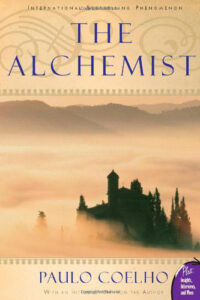
You know, some of the more popular movies and books are just a repetition of something from hundreds of years ago, I was surprised to hear, for example, that The Alchemist is based on a true story of a Jew from hundreds of years ago who lived in Krakow Poland, who was very poor and had this repeating dream to go to Prague, essentially, underneath the Charles Bridge was a treasure that he needed to dig up. Sure enough, he went. Finally, after this kept bothering him, he kept getting the recurring dream over and over again, he finally went all the way to Prague, and it was a guarded bridge, and he tried to go in the middle of the night and not get caught, but he did get caught, and the soldier who caught him asked why he was there, and he just told him the truth. I had this dream that there’s buried treasure under here, and he’s like, “How ridiculous. I have a dream that in Krakow, Poland, there’s a treasure buried under some poor guy’s stove in his home.”
Of course, he knew that that was a message for him, and so he got let go. He went back to Krakow, dug under the stove. Sure enough, there was a large treasure there. To this day, there’s a huge synagogue. I don’t know if it’s huge, but there’s a synagogue that’s still standing called the Isaac Synagogue, which he paid for, which was some of his treasure.
Amazing. It’s a very well-known story. Incredible.
What are some of your favorite books or movies that are maybe science fiction or that are fantasy or whatever that have mystical Jewish kind of biblical secrets or truisms buried in them?
For us, I think you can find those things everywhere, right? It’s a lot of the same, like archetypes. And people like to point out, whether in Star Wars figures. For example, a lot of the kind of Jewish elements in Star Wars, where the force is almost like just another word for this godly energy, the Shekhinah that imbues the physical world and gives you power. And Yoda, in Hebrew, Yoda, the one who knows in Hebrew. Yoda literally means the knowledgeable one in Hebrew. So you’ll find a lot of these turn of course, much has been said about the Emperor Palpatine and his resemblance to Hitler and the storm troopers, of course, and the Nazis and so there’s all that in Star Wars.
You have it in Avatar, right? James Cameron.
So, The Terminator. The Tree of Life. Eywa, of course. Eywa just happens to have the same letters as the ineffable name of God in Judaism, the same four letters. Again, a lot of that same kind of mystical understanding of, really, souls and bodies. That’s really the theme of being able to kind of download your consciousness into another being. It’s just like reincarnation all over again, really, and resurrection. You’ll find a lot of these themes in many movies and books.
One of my favorite movies is Interstellar. Great movie, also sci-fi on the one hand, but I think very mystical, spiritual on the other, and the themes of love and interconnectivity and time dilation, right? Time is really almost like a construct, and we think that it’s something, so we’re so sure of our clocks, but really, it’s not. Time is quite relative, and that’s really what Judaism has always said. In Judaism, time is always relative. And the Torah gives the Sanhedrin the power to proclaim a new month and to proclaim the holidays, and we can change the Jewish hour and the Jewish minute.
We have a zmanim right over the course of the year. The definition of an hour in Judaism and Jewish law changes interestingly, and time is very relative in Jewish law; time is not concrete. The holidays are on different days of the year. Every year, it can be earlier, it can be later, it can be cold, it can be warm, and we have this 19-year cycle where we have lunar months, but solar years. Every 19 years, we stay in sync with the sun so that we don’t fall behind, but our months are lunar. And so it’s an amazing thing. The Jewish system of time is actually quite incredible.
The themes of time, you know, the Garden of Eden in Hebrew, like, what does that actually mean? What does the Garden of Eden mean? What is Eden? Eden in Hebrew is something delightful, a pleasure, but in Aramaic, which is closely related, it’s like the mere language to Hebrew and uses the same letters. In Aramaic, Eden means time. It was a garden of time. It was an island in time. There’s something really interesting about time. And in Jewish law, time is quite real, just like it would be in quantum physics; time is very relative, and we almost have the power to manipulate time in Jewish law. So, Interstellar, I love it for that reason.
Time is part of the Kabbalah; they teach that time, space, and motion are all illusions. And in Interstellar, when he’s in the Tesseract and able to interact with different time frames and send messages back in time to his daughter, that reminded me that the Tesseract is actually where I first heard of that word in the book A Wrinkle in Time, which I read as a kid. There was one concept from that science fiction book that really kind of stuck in my craw.
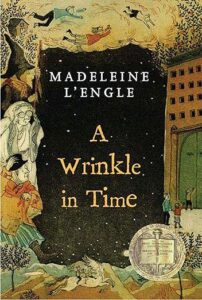
It felt really weird to me that these stars, suns basically, were consciousness that could incarnate as looking like human beings. They took these kids who were the protagonists in the book on this journey, and they were stars, but here they were in human form. And now that makes a lot more sense, because after reading Tanya and understanding that everything is consciousness, there’s nothing independent of God, everything is made of God, and therefore, a rock has consciousness, a table has consciousness, why wouldn’t a planet or a star?
You’ll find, particularly in the medieval era, Jewish texts, this understanding that the stars and planets have some level of, some kind of consciousness, certainly not human consciousness, but some kind of, definitely some kind of divine energy. There are even some sources that relate the stars and planets to various angels, and that’s common, not just in Jewish texts, but in all texts from medieval and even ancient times. You can say that everything has some level of consciousness, not the same level of consciousness, right? So in Judaism, we basically have, again, four levels of creation, right?
The very bottom is called the domem, which is inanimate matter, right? And then above that is tzomei’ach, which is plant life. Above that is animal life, ba’alei chayim, or the highest level. Then the highest level of consciousness of life is the human, the medaber, literally, the speaking being. We kind of divide everything up into those four, and there are transitions between interesting the Arizal, again, will say that there’s something that’s between rock and plant. What’s between domem and tzomei’ach?
What do you have in nature that’s not quite rock, not quite plant? He brings the example of corals. He even uses the word corals. Corals look like rocks, but they’re actually alive, so they’re kind of like plants and rocks. Then he says, “What’s the transition from what you have that’s between plant and animal? What is it that’s kind of like a plant but also kind of like an animal?” He brings the example of the carnivorous plants. We have Venus flytraps and pitcher plants that actually eat bugs, and they can even eat little critters and rodents sometimes. You have plants that can eat like animals, that are carnivorous, that are heterotrophic, so that’s between plant and animal.
Then there is also, well, what’s between animal and human? What is it that has both? And incredibly, he says this 500 years ago, long before Charles Darwin. He says that apes are between chai and medaber, so the Arizal, already 500 years before, suggested that he speak about evolution through random mutations. Of course, we’re talking about it from a godly 100% God driven perspective and God controlled perspective, but that there are almost like transition species that are in betweens, and it says that things can reincarnate through all the levels. So a person can reincarnate in an animal or in a plant or even in an inanimate object, even in water or in stone, but not the entire soul, not that necessarily, the whole human soul isn’t reincarnated in stone, but certain sparks, certain sparks of holiness, certain aspects of the soul that need rectification.
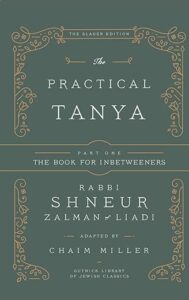
Somebody could reincarnate as a cat or a dog because they went off the path and human life?
Yeah, one part of their soul, yeah, a part of their soul could reincarnate a particular spark or particular aspect that needs rectification. Could be reincarnated as an animal.
One example that comes to mind is Baal Shem Tov. I love Baal Shem Tov; he has such amazing stories, like miracles. I love hearing the stories about him. So there was one where there was a cat that kept coming and visiting and waiting for him to pay attention to him, and it finally got his attention. And then he told it three times in Hebrew, You were forgiven, you were forgiven, you are forgiven. And then the cat immediately runs out into traffic and gets hit and killed by a car.
Wow, yeah, absolutely. There are definitely incredible stories like that, of reincarnation, even in our days. So it happens.
I know we’re running over time here. Gosh, I had so many questions. We could go for an hour more, but I want to respect your time here. Maybe we’ll do a part two at some point, but God willing. What would be the wisdom nugget that you want to leave our listeners or viewers with?
I think just that we have to recognize that the world is going through a transition that hasn’t happened, probably ever, when it comes to not just geopolitically, but even more with technology, with what AI is doing. It’s fitting we spoke about The Matrix and Terminator, but it almost seems like the robot apocalypse is upon us, and it can go in a really good way. It can go in a really bad way, hopefully the good, but we have to recognize that the world as we know it is essentially coming to an end, and we’re all going to be questioning, what is our place in the world, and what makes us human?
I think that’s going to be the big question that everybody’s going to talk about once these AI robots come out. How are we different? If these machines can make music and can make art as good as, if not better than, what we can do. Some people will say, “No, it’s not real.” It’s just aggregating from other things, but so do we, right? Any human artist is not just taking it out of nowhere. It’s coming from things we’ve seen and learned? Yeah, we all stand on the shoulders of giants, exactly. We’re all absorbing information growing up, and eventually becoming producers.
AI is kind of doing the same, super, super fast. What is our place in the cosmos? And how are we different from robots? As a biologist, I’ve had this question for a long time, even long before AI, going back to my university days and playing with muscles and nerves and the electrical conductivity. We are electrical beings. We are ultimately electrical machines as well. What makes us different than an AI robot machine? Those big questions are going to come up, and I think now is the time to really reevaluate who we are as human beings. What does it mean to be human? How do we connect to God in all of this? What is the purpose of our lives, and to return to reconnect with our souls? We can’t just keep living as bodies anymore, because there are going to be bodies that are superior.
The word for return in Hebrew is teshuva.
That’s right, it’s the same word for repentance and return in Hebrew. Teshuva means both the repentance and return, returning to God, coming back to your godly spark of recognizing who you truly are inside, not just an electrical machine, because we are all electrical machines, not much different from robots.
Human computer. We are inside the terminal connected to the supercomputer. If it’s disconnected, there’s no utility to the dumb terminal.
I think that’s the big question is for everybody to start thinking about these things, of, who am I as a human being, and what is my place in the cosmos is, what is my connection to God, to the big picture, who am I, where am I, and how what’s the world going to look like in 10, 15, 20 years? What kind of world do we want? What kind of world do we want to create? Are we going to be able to bring about the long prophesied kingdom of heaven on earth, a harmonious era where the whole world is united and we have world peace? Like Isaiah said, like a lot of the prophets said, can we create that world together? We’re gonna have to work together. The world is transitioning. We have to reunite if we’re ever to have that peaceful, harmonious world.
I recently, in the last couple of years, heard that the word apocalypse doesn’t mean end of the world in Greek; it actually refers to the lifting of the veil.
Yeah, exactly, that’s where we’re heading. All will be revealed very soon.
Awesome. Well, you’re an inspiration. Thank you. You’re an inspiration. Thank you so much for being on the show. I’d love for you to share your website and your YouTube channel with our listeners.
The website’s a little harder to spell. It’s in Hebrew, mayimachronim.com. The YouTube channel is just my name @EfraimPalvanov. And if you search for Efraim, I’m usually the first one that comes up. I’m happy to discuss these ideas with anyone who has my contact information online on my website.
Okay, thank you so much, and have a great week. We’ll catch you on the next episode. I’m your host. Stephan Spencer, signing off.
Important Links
Connect with Efraim Palvanov
Books
Business/Organization
Film
People
Previous Get Yourself Optimized Episode
YouTube Videos

